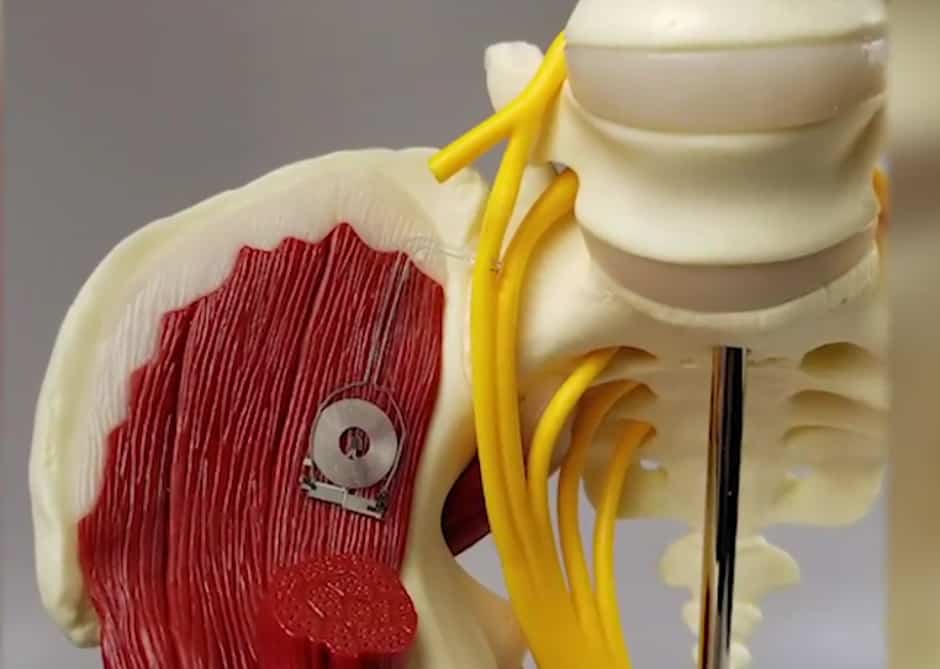
Materials scientists and engineers at Northwestern University, Illinois and neurosurgeons at Washington University developed the device that delivers regular pulses of electricity to damaged peripheral nerves in rats after a surgical repair process. This, they claim, accelerated regrowth of nerves in their legs and enhanced the ultimate recovery of muscle strength and control. The wireless device, which is the size of a small coin and as thick as a sheet of paper, operates for about two weeks before being absorbed into the body.
Such transient engineered technology, which is described in Nature Medicine, could eventually complement or replace pharmaceutical treatments for medical conditions in humans, the team envisions.
Furthermore, bioelectronic medicine is said to provide therapy and treatment over a clinically relevant period of time and directly at the site where it's needed, which reduces side effects or risks associated with conventional, permanent implants.
"These engineered systems provide active, therapeutic function in a programmable, dosed format and then naturally disappear into the body, without a trace," said Northwestern's John A Rogers, a co-senior author of the study. "This approach to therapy allows one to think about options that go beyond drugs and chemistry."
According to Northwestern, the findings – which are yet to be tried on humans - offer promise as a future therapeutic option for nerve injury patients. For cases requiring surgery, standard practice is to administer some electrical stimulation during the surgery to aid recovery. Until now, however, doctors have lacked a means to continuously provide that added boost at various time points throughout the recovery and healing process.
"We know that electrical stimulation during surgery helps, but once the surgery is over, the window for intervening is closed," said co-senior author Dr Wilson ‘Zack’ Ray, an associate professor of neurosurgery, biomedical engineering and orthopaedic surgery at Washington University. "With this device, we've shown that electrical stimulation given on a scheduled basis can further enhance nerve recovery."
The technology is a thin, flexible device that wraps around an injured nerve and delivers electrical pulses at selected time points for days before the device degrades in the body. The device is powered and controlled wirelessly by a transmitter outside the body.
Bioelectronic medicine
The Washington University researchers studied the bioelectronic device in rats with injured sciatic nerves. This nerve sends signals up and down the legs and controls the hamstrings and muscles of the lower legs and feet. They are said to have used the device to provide one hour per day of electrical stimulation to the rats for one, three or six days or no electrical stimulation at all, and then monitored their recovery for the next 10 weeks.
They found that any electrical stimulation was better than none at helping the rats recover muscle mass and muscle strength. In addition, the more days of electrical stimulation the rats received, the more quickly and thoroughly they recovered nerve signalling and muscle strength. No adverse biological effects from the device and its reabsorption were found.
"Before we did this study, we weren't sure that longer stimulation would make a difference, and now that we know it does, we can start trying to find the ideal time frame to maximise recovery," Ray said. "Had we delivered electrical stimulation for 12 days instead of six, would there have been more therapeutic benefit? Maybe. We're looking into that now."
The research study also showed the device can work as a temporary pacemaker and as an interface to the spinal cord and other stimulation sites across the body.




Poll: Should the UK’s railways be renationalised?
The term innovation is bandied about in relation to rail almost as a mantra. Everything has to be innovative. There is precious little evidence of...